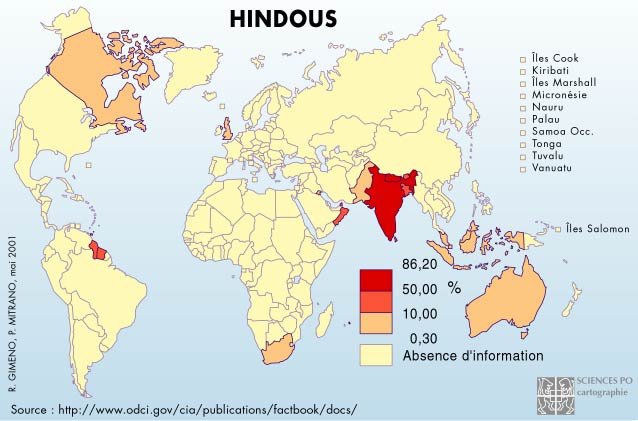RELIGIONS OF THE WORLD.
There are many religions that we know in these times, each one more varied than another.
The different religions of the world have billions of followers and on the contrary others are reduced to small nuclei that have their own beliefs based on very peculiar thoughts and phenomena.
The religions of the world that have more followers have existed for thousands of years and extend throughout the geography. They have deeply rooted customs and rituals practiced by their faithful and devotees.
Christianity:
Christianity (from Latin christianismus, and this from Greek χριστιανισμός) 3 is a monotheistic Abrahamic religion based on the life and teachings attributed to Jesus of Nazareth, presented in the biblical canon - which includes both the Old and New Testaments. Christians believe that Jesus is the son of God, as well as the Messiah (or Christ) prophesied in the Old Testament, who died crucified for the redemption of the sins of the human race, and who rose again on the third day.
Some of the sacred Christian writings are shared with Judaism. The Tanakh constitutes, together with the Greek Bible -more ancient than the Tanach in its current form-, the basis and source for the Old Testament of the different Christian Bibles. For this reason, Christianity is considered an Abrahamic religion, along with Judaism and Islam.
Historiographically, its beginnings are located in the first half of the first century Anno Dómini, in the time of Jesus of Nazareth. However, the Christian faith considers that time as the arrival of the Messiah announced in Jewish prophecies of the Old Testament.
Some studies of the twentieth century do not take the year 33 d as incontrovertible date. C. for the death of Jesus Christ. There are those who, when investigating the dates, suggest that there could be a gap of 4 to 8 years between the beginning of the computation of the Christian era and the precise date of the birth of Jesus of Nazareth, known as Christ.4 In addition to this , there is no clear certainty or consensus among these authors that he died at the age of 33, as some biblical texts seem to show. Note 1 In its early decades, Christianity was considered by some to be a sectarian doctrine of Orthodox Jewish traditions.6 Since Christianity became the official religion of the Roman Empire in the fourth century, it has had a significant influence on Western culture and many others.
The word Christianity comes from the Greek χριστιανός, christianós, 'Christian', which in turn comes from the proper name Χριστός, Christós, 'Christ', translation of the Hebrew Messiah, meaning 'anointed'. The origin of the term is indicated in the book of Acts of the Apostles.
Christianity in the World:
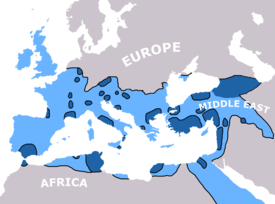
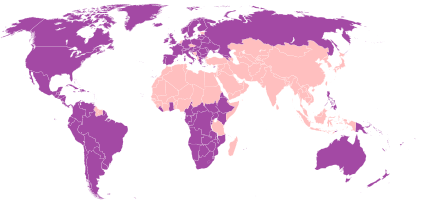
A la izquierda, mapa que muestra la expansión del cristianismo en Europa, sudeste de Asia y norte de África hacia los años 325 (azul) y 600 (celeste) de la era común. A la derecha, mapa que señala en violeta los países en los que la mayoría de la población profesa el cristianismo en la actualidad.
Islam:

https://www.huffingtonpost.com/qasim-rashid/9-questions-you-should-as_b_6413228.html
It is an Abrahamic monotheistic religion whose dogma is based on the Koran, which establishes as a fundamental premise for its believers that "There is no God but Allah3 and that Muhammad is the last messenger of Allah" .4 The Arabic word Allah, hispanized like Allah, it means God and its etymology is the same as the Semitic word El, with which God is named in the Bible. Islamic scholars define Islam as: "Submission to God the Most High through monotheism, obedience and the abandonment of idolatry." 5 Followers of Islam are called Muslims (from the Muslim muslim مسلم, 'who submits' ). They believe that Muhammad is the last of the prophets sent by God and seal of the Prophecy.6 The sacred book of Islam is the Koran, 7 which according to the Muslims was dictated by Allah to Muhammad through Jibreel (the Archangel Gabriel) .
They are accepted as prophets mainly (but not limited to) Adam, Noah, Abraham, Moses, Solomon and Jesus (called Isa). In addition to the Koran, Muslims of Sunni tradition also follow the hadiths and sunnah of the Prophet Muhammad, which make up the historical record of the actions and teachings of the Prophet. The Torah (the Old Testament of Christians), the Books of Solomon and the Gospels (the New Testament) are also accepted as sacred books.
Islam is a monotheistic, abrahamic religion that worships only Allah without copartners. It is the second largest religion in the world, after Christianity and has the highest growth in terms of followers, who are estimated to reach 1.8 billion or 24.1% of the population, who are known as Muslims. Muslims are the majority of the population in 50 countries.
Islam began with the preaching of Muhammad in the year 622 in Mecca (in present-day Saudi Arabia). Under the leadership of Muhammad and his successors, Islam spread rapidly. There is disagreement between Muslims and non-Muslims if it was extended by religious or military imposition, or by conversion of peoples to Islam.
Islam in the world:

https://www.saberespractico.com/cultura/diferencia-entre-moro-arabe-y-musulman/
Buddhism:
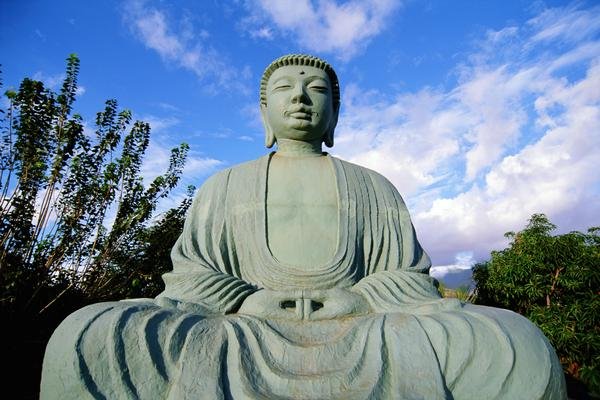
https://ayurvedadeltibet.com/la-verdad-absoluta-budismo/
Buddhism is a "non-theistic philosophical and spiritual doctrine belonging to the Dharmic family and, according to Vedicism, of the Nástika type." It comprises a variety of traditions, beliefs and spiritual practices mainly attributable to Buddha Gautama. Buddhism originated in India between the sixth and fourth centuries BC, from where it spread to much of East Asia, although it declined its practice in the country of origin during the Middle Ages. There are two main branches of Buddhism: Theravada (School of the Elders) and Mahāyāna (The Great Way). Buddhism is the fourth most important religion in the world with more than 500 million followers, or 7% of the world's population.
The different branches of Buddhism differ about the exact nature of the path to liberation, the importance and canonical value of various scriptures and teachings, self-knowledge and, especially, in the respective practices of Buddhism. These practices include the Spiritual Refuge, the Samatha, Vipassana, Bodhicitta and the practices of the Vajrayana of the State of Generation and the State of Completion. Basically Buddhism contemplates the study of the Buddhist Scriptures, observing the moral principles, renouncing the material, the practice of Meditation, cultivating wisdom, kindness and compassion, the Mahāyāna practice of the Bodhicitta and the Vajrayāna practices of the state of generation and the completion status.
In Theravada the ultimate goal is to achieve the cessation of kleshas (mental destructive states, including ignorance, adherence to material and aversion) to achieve the sublime state of Nirvana (spirituality) by practicing the Eight Noble Truths (also known as the Middle Way), thus liberating itself from the cycle of suffering and rebirth. Therevada is mainly followed in Sri Lanka and Southeast Asia.
The Mahāyāna includes the traditions of Pure Land, Zen, Buddhist Nichiren, Shingon Buddhism and the Tiantai Buddhist School and has ample following throughout East Asia. Instead of Nirvana (spirituality), the teachings of Mahāyāna are aimed at attaining Buddhahood (concept) by following the Bodhisattva path, a state where one remains in a cycle of rebirth to help others achieve their awakening to the Buddhist path.
The Vajrayana covers teachings attributed to the Siddha Indians and could be considered as a third branch of Buddhism or part of the Mahāyāna. Tibet Buddhism preserves the teachings of eighth-century India and is also practiced in the regions surrounding the Himalayas, Mongolia and Kalmykia. Tibetan Buddhism aspires to the status of Buddha (concept) or the so-called Rainbow Body.
Derived from the Sramana movement, Buddhism was founded in India in the sixth century BC. C. by Buda Gautama2 and has evolved to acquire the current great diversity of schools and practices. There have been some difficulties in defining Buddhism in the West.
Buddhism in the world:
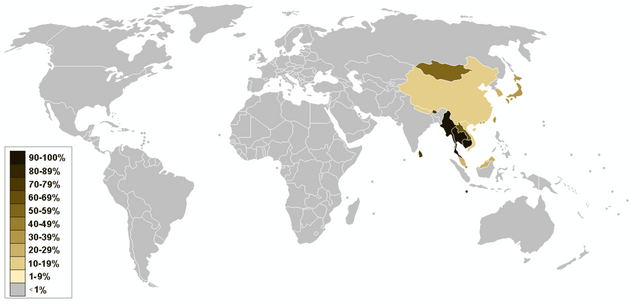
https://es.wikipedia.org/wiki/N%C3%BAmero_de_budistas_en_el_mundo
Judaism:

https://www.enlacejudio.com/2016/11/24/5-verdades-sorprendentes-sobre-el-judaismo-3/
The term Judaism refers to the religion, tradition and culture of the Jewish people. It is the oldest of the three monotheistic religions, 4 along with Christianity and Islam, originated in the Middle East, called "Book religions" or "Abrahamic religions." It has the smallest number of faithful among them. Historically, the other two religions derive from Judaism.
Although there is no single body that systematizes and fixes the dogmatic content of Judaism, its practice is based on the teachings of the Torah, also called Pentateuch, composed of five books. In turn, the Torah or the Pentateuch is one of the three books that make up the Tanakh (or Old Testament), to which divine inspiration is attributed.
In Orthodox religious practice, oral tradition also plays an important role. According to the beliefs, it was given to Moses along with the Torah and preserved from his time and that of the prophets. The oral tradition governs the interpretation of the biblical text, codification and commentary. This oral tradition was transcribed, giving birth to the Mishnah, which later would be the basis of the Talmud and an enormous exegetical body, developed to this day by scholars. The compendium of the laws extracted from these texts forms the Jewish law or Halacha.
The main feature of the Jewish faith is the belief in an omniscient, omnipotent and provident God who would have created the universe and chosen the Jewish people to reveal the law contained in the Ten Commandments and the ritual prescriptions of the third and fourth books of the Torah. Consequently, the norms derived from such texts and from the oral tradition constitute the guide of life of the Jews, although the observance of them varies greatly from one group to another.
Another characteristic of Judaism, which differentiates it from other monotheistic religions, is that it is considered not only as a religion, but also as a tradition, a culture and a nation.5 6 Other religions transcend several nations and cultures, while Judaism considers religion and culture conceived for a specific people. Judaism does not require non-Jews to join the Jewish people or adopt their religion, although converts are recognized as Jews in every sense of the word. Likewise, the Jew has been commissioned by his writings to be "light to the nations" and propagate ethical monotheism throughout the world. The religion, the culture and the Jewish people can be considered separate concepts, but they are closely interrelated. The tradition and the Jewish culture are very diverse and heterogeneous, since they developed in different ways in different communities and each local community incorporated cultural elements of the different countries to which the Jews arrived from the dispersion.
Hinduism:
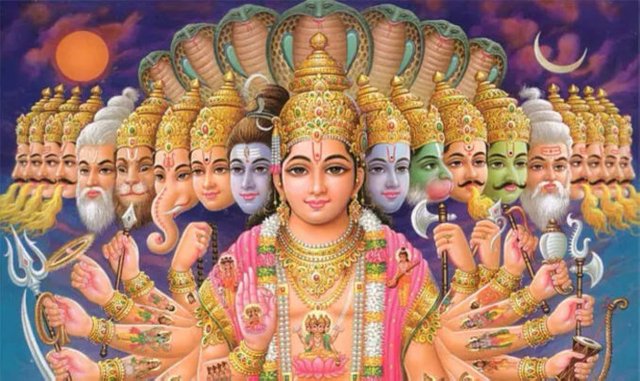
http://www.patriciamercado.org.mx/bases-del-hinduismo/
Hinduism is an Indian Dharma or could be interpreted as a way of life, widely practiced in South Asia. Hinduism is considered one of the oldest religions in the world and some who practice it, as well as scholars, refer to it as Sanatana Dharma, "the eternal tradition", or the "eternal way", beyond the history of the humanity. Scholars consider Hinduism as a fusion or synthesis of various Indian cultures and traditions, with diverse roots and without any founder. This "Hindu Synthesis" began, to be developed between 500 and 300 years BC, following the guidelines of the Vedic period.
Hinduism contains very diverse philosophies but maintains common roots: recognized rituals, cosmology and pilgrimage to sacred places. The Hindu texts are classified in Śruti ("heard from generation to generation") and Smrti ("remembered in full consciousness"). These texts discuss topics such as theology, philosophy, mythology, topics of Vedism, Yoga, rituals of the Āgama and construction of temples among others. The main scriptures include the Vedas and Upanishad, the Bhagavad-gītā, and the Āgama. The sources of these texts and the eternal truths play an important role in this religion, but there is a strong Hindu tradition that questions their authority in order to deepen the understanding of these truths and also to further develop traditions.
Prominent themes in Hindu beliefs include the four Purushartha, the real goals of human life, namely, Dharma (ethics and obligations), Artha (prosperity and work), Kama (desires and passions) and Moksha (liberation, freedom and salvation). ), Karma (action, intent and consequences), Samsara (cycle of rebirth) and several Yoga (paths and practices to achieve Moksha).
Hindu practices include rituals such as prayer, recitation, meditation, ceremonies for the passage to puberty, annual festivals and occasional pilgrimages. Some Hindus abandon their social life and material belongings to devote themselves to Sanniasin monastic practices.
Hinduism prescribes eternal obligations, such as honesty, refraining from harming living beings, patience, tolerance, self-control, and compassion, among others. The four major denominations of Hinduism are Vaisnavism gaudia, Shivaism, Shaktism and Smartism.
Hinduism is the third largest religion in the world. His followers called Hindus account for 1.5 billion or 15% or 16% of the world's population. Hindus make up the majority of the population in India, Nepal and Mauritius. There are also significant Hindu communities in the Caribbean, Africa and North America.
Hinduism in the world:

